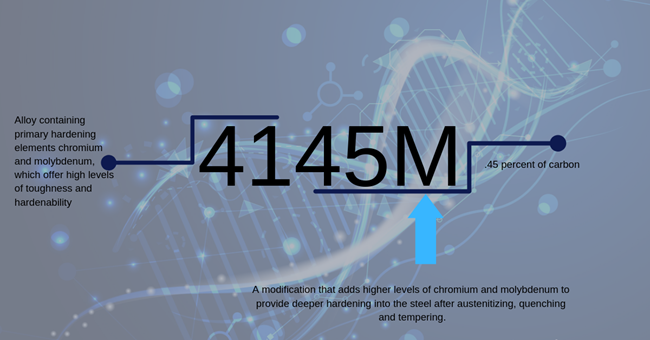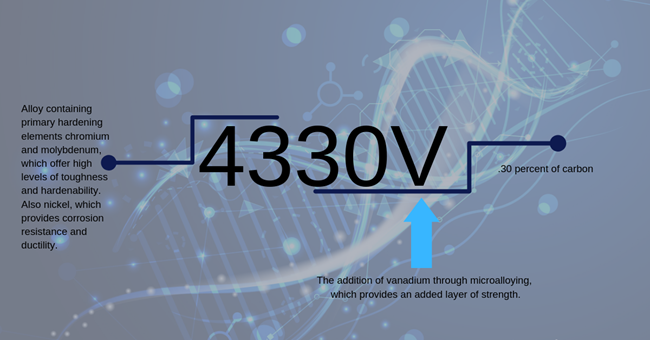.ashx?h=300&w=940&hash=1A331F388CE069A04815EC792DCDCC25)
It takes a little bit extra to withstand the rigors of the oil and gas industry. That’s why it’s important to get an inside look at the grades being used—down to the composition of the alloy—in order to ensure they can meet the unique needs of your applications.
The metal properties most vital for operating in an oil and gas environment include:
- Strength
- Toughness
- Ductility
- Weldability
This makes alloy metals an ideal fit as they feature higher levels of the various alloying elements when compared to carbon steel. Let’s put three commonly used alloy grades for oil and gas under the microscope--4140, 4145M, and 4330V—for a closer look at how the alloying elements impact the end performance.
We start with the final two numbers first. Much like with the grade anatomy of carbon bars, the final two numbers in these alloys indicate the amount of carbon contained within each grade. In the case of 4140, for example, this grade contains 0.40 percent carbon.
But it’s the first set of numbers that truly define how well the grade (once heat treated) can ultimately hold up to your application in the oil and gas environment.
41xx (4140 and 4145M)
- Chromium and molybdenum are the primary hardening elements, both of which offer high levels of toughness and hardenability. An added benefit is the high resistance to corrosion, which is helpful in the harsh elements of the oil and gas environment.
- Molybdenum is highly ductile, which helps increase impact properties at high strength.
- The presence of manganese (while not a primary hardening element) helps increase strength, hardness, and wear resistance.
- These elements add good weldability to the grades (it is recommended to weld in the annealed condition).
- In the case of 4145M, the ‘M’ indicates a modification to the makeup that adds higher levels of chromium and molybdenum. This is done to provide deeper hardening into the steel after austenitizing, quenching and tempering. This added strength and toughness is a primary reason that 4145M is used for such applications as downhole drilling tools, tool joints, and various other drilling components.
-
43xx (4330V)
- Chromium, molybdenum, and nickel are the primary hardening elements.
- The presence of nickel elevates the level of corrosion resistance. This also provides an added layer of ductility and malleability, which allows 43xx grades to be easily formed into various shapes.
- Like with the 41xx grades, 43xx feature good weldability with the recommendation to weld in the annealed condition.
- In the case of 4330V, the ‘V’ stands for ‘vanadium’ which is added through microalloying to give this grade an added layer of strength. This makes 4330V one of the deepest hardening grades available, which is important in order to hold up to some of the toughest oil and gas applications available, such as mud motor mandrels, drilling jars, and crossovers.
In the search for the right metal for your oil and gas application, make sure you give the grade an inside look. The numbers will reveal how well your application can ultimately meet the necessary strength, toughness, ductility, and weldability of this environment.




